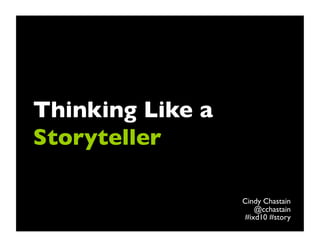Prologue
Our first class of the module was an introduction into our new module, there was no class but Kyle did leave us with learning materials regarding what we would of covered in class. So what is a narrative?
Narrative is the choice of which events to relate and in what order to relate them – so it is a representation or specific manifestation of the story, rather than the story itself. The easy way to remember the difference between story and narrative is to reshuffle the order of events. A new event order means you have a new narrative of the same story. Narrative turns story into information, or better, into knowledge for the recipient (the audience or reader). Each story event is a unit of knowledge the audience requires.
In the pre recorded lecture we looked at the deliverables and expectations we would be expected to have ready for hand in. At the very end we will have showcase our work to Kyle and show the process on how we got there.
To Think like a Storyteller

To start things off Kyle wanted us to look at “Cindy Chastain – Thinking like a Storyteller”
Storytelling is all about engagement. Designing with a narrative in mind can make a difference between a product that merely functions will and one that engages the minds and emotions of users. This session will explore how an understanding of narrative techniques can make us better designers.
How can we as designers, provide the cues that will deepen the narrative connection?
Dramatic Storytelling

This shows the layout of dramatic storytelling. As Cindy says all stories have a shape, and in the case of dramatic storytelling shape arches up to the climax and then drops back down.
Another important thing we should take away from this video is Aristotle’s Six Qualitative Elements of Drama. Which can be broken down into 6 different areas;
- Plot (events)
- Character (agents)
- Thought (ideas/theme)
- Diction (language)
- Song (pattern)
- Spectacle (the visuals)
Now that we have those in mind, if we look at the graph above again with these considered we get a graph that looks like this.

There’s a relationship between things that push each other going and progress the story. But how does this relate to interactive products? Another way to think of a user is that they are a character or agent in an interactive story enirvonment.